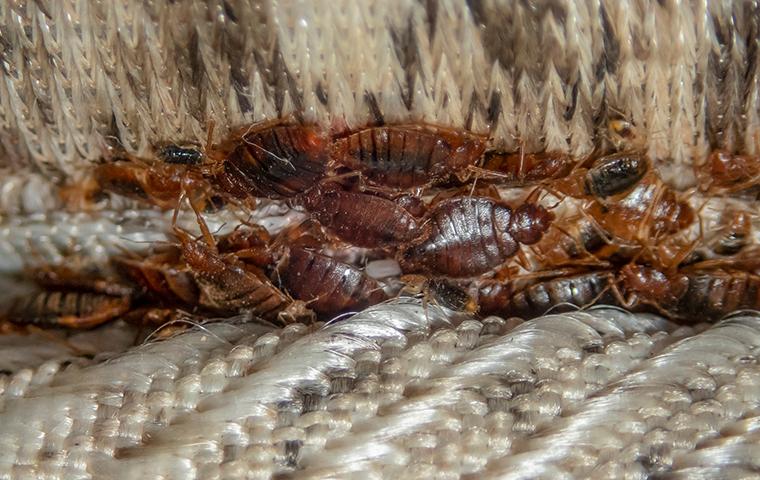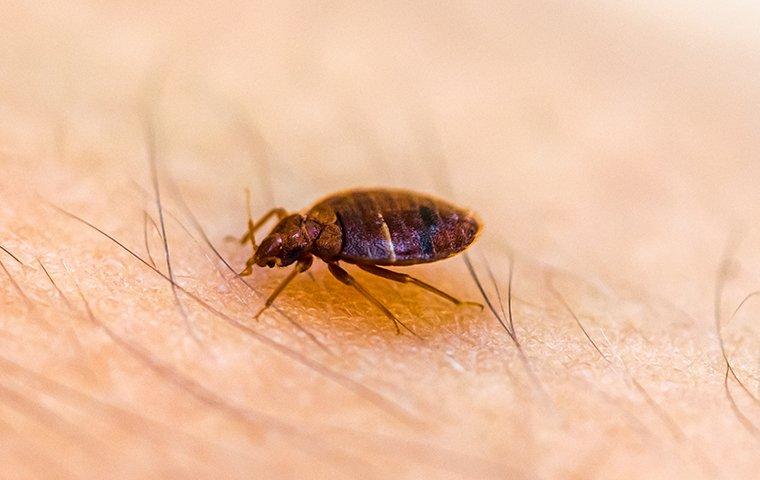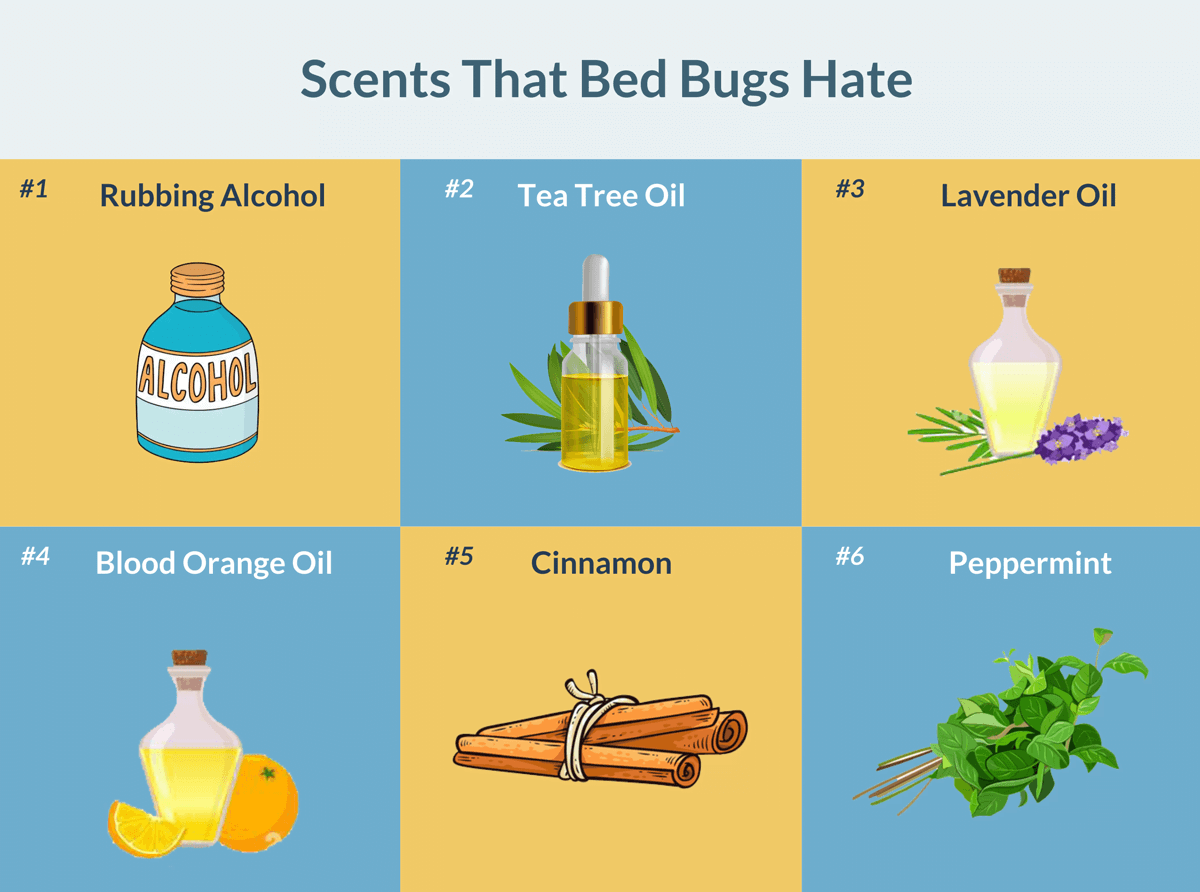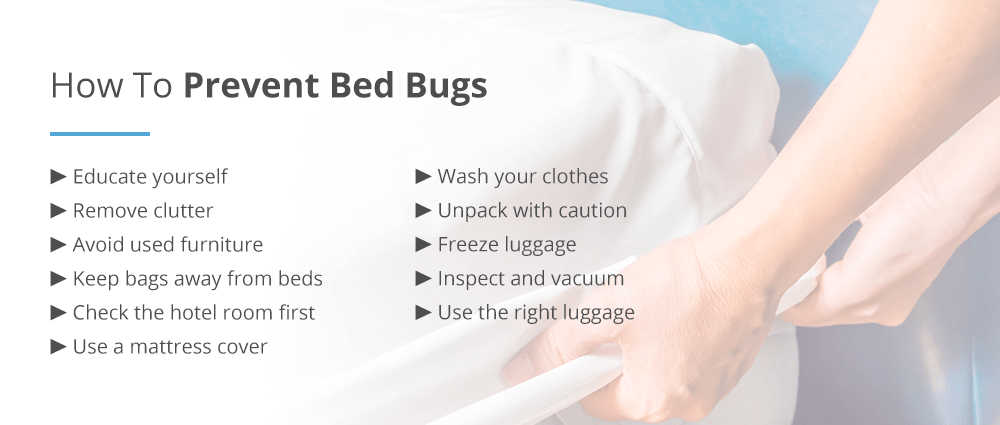To keep bedbugs away, regularly vacuum and clean your living spaces, inspect secondhand furniture, and minimize clutter. Seal any cracks or crevices to prevent infestation.
These simple steps will help protect you from these pesky pests. Bedbugs are small, bloodsucking insects that can be a nuisance in homes, hotels, and other places. They hide in cracks and crevices during the day and come out at night to feed on blood.
Preventing bedbug infestations is essential for maintaining a clean and healthy living environment. By implementing effective prevention methods, you can keep bedbugs away and ensure a comfortable and pest-free space. We will explore practical tips to help you safeguard your home and prevent bedbug infestations.
Understanding Bedbugs
Bedbugs are tiny insects that feed on blood. They are active mainly at night and are known to hide in cracks and crevices close to their human hosts.
What Are Bedbugs?
Bedbugs are small, reddish-brown insects that feed on blood. They are nocturnal creatures that can cause itchy bites on humans.
How Do Bedbugs Infest Homes?
Bedbugs can infest homes through luggage, second-hand furniture, or used clothing. They can also spread through shared spaces like hotels or public transportation.

Credit: www.aikenpest.com
Preventing Bedbug Infestation
Protect yourself from bedbugs before they become a problem. Follow these tips to keep those pesky pests at bay.
Inspecting Hotel Rooms And Accommodations
Diligently check hotel rooms for any signs of bedbugs such as tiny dark spots on sheets and mattresses. Notify management immediately if you suspect an infestation.
Using Protective Covers For Mattresses And Pillows
Invest in protective covers for mattresses and pillows to create a barrier against bedbugs. Wash covers regularly to keep them clean and effective.
Cleaning And Decluttering Your Home
Regularly clean and declutter your home to eliminate potential hiding spots for bedbugs. Vacuum carpets, baseboards, and furniture to remove any traces of bugs or eggs.
Bedbug Repellents
One of the most effective ways to keep bedbugs away from you is by using bedbug repellents. These repellents can help create a barrier between you and these pesky insects, preventing them from coming into contact with your skin and causing bites. In this article, we will explore two types of bedbug repellents: natural repellents and chemical repellents.
Natural Repellents
Using natural repellents is a great option if you prefer more eco-friendly and chemical-free solutions. These repellents are usually made from natural ingredients that have properties that repel bedbugs. Here are some effective natural repellents to consider:
- Lavender oil: Bedbugs are repelled by the scent of lavender oil. Apply a few drops on your skin or add it to a spray bottle with water for a DIY bedbug repellent spray.
- Tea tree oil: Another essential oil that works as a natural repellent is tea tree oil. You can dilute it with water and spray it around your bed or directly on your mattress to keep the bugs away.
- Peppermint oil: The strong scent of peppermint oil is a deterrent for bedbugs. Mix a few drops with water and spray it in areas where bedbugs may be hiding, such as cracks and crevices.
Chemical Repellents
If you’re dealing with a severe bedbug infestation or prefer a stronger solution, chemical repellents can be an effective option. These repellents are formulated with chemicals that are known to repel bedbugs. However, it’s important to use them with caution and follow the instructions carefully. Here are a few chemical repellents to consider:
- DEET-based products: DEET (N,N-diethyl-meta-toluamide) is a common ingredient in insect repellents. Look for repellents that specifically mention effectiveness against bedbugs.
- Permethrin sprays: Permethrin is a synthetic chemical that is highly effective in repelling bedbugs. You can use permethrin-based sprays on your clothing, bedding, and luggage to create a barrier against bedbugs.
- Pyrethroid-based repellents: Pyrethroids are synthetic chemicals derived from chrysanthemum flowers and are commonly used in insecticides. These repellents are available in various forms, including sprays and powders.
When using chemical repellents, it’s important to read the instructions, apply them in well-ventilated areas, and avoid direct skin contact. Remember to wash your hands thoroughly after applying any repellents and consider using additional protective measures such as bedbug-proof mattress encasements and pillow covers for a comprehensive approach against bedbug infestations.
Practicing Bedbug Awareness
Practicing Bedbug Awareness is essential to keep these pesky pests away from your home and belongings. By being vigilant and informed about bedbug prevention, you can minimize the risk of an infestation. Let’s explore some key practices for staying bedbug-free:
Recognizing Common Signs Of Bedbug Presence
Spotting the signs of a potential bedbug infestation is critical for taking immediate action. Look out for red itchy welts on the skin, small bloodstains on bedding, or tiny dark spots of fecal matter. If you notice these indicators, consider seeking professional assistance for timely intervention.
Inspecting Used Furniture And Clothing
Before bringing used furniture or clothing into your home, conduct a thorough inspection for any signs of bedbugs. Check seams, folds, and crevices for eggs, shed skins, or live bugs. If you’re acquiring items from a second-hand store or online, be diligent in your examination to prevent bedbugs from infiltrating your space.
Being Cautious During Travel
When traveling, take proactive measures to avoid encountering bedbugs. Inspect hotel rooms for any hints of bedbug activity, such as dark spots on sheets or mattress seams. Use luggage stands and keep your belongings elevated, away from the floor and furniture. Upon returning home, immediately wash and dry your travel clothes at a high temperature to eliminate any potential bedbugs.
Treating Bedbug Infestations
When it comes to treating bedbug infestations, quick and effective action is essential. Dealing with these persistent pests can be a daunting task, but there are several methods you can use to eradicate them from your home. Whether you choose to hire professional exterminators, utilize DIY eradication methods, or dispose of infested items properly, taking action promptly is crucial in preventing a widespread infestation.
Hiring Professional Exterminators
Professional exterminators have the knowledge and experience to effectively eliminate bedbugs from your home. They use advanced techniques and tools to locate and eradicate the infestation, ensuring thorough removal of the pests. It’s essential to choose a reputable extermination company with a proven track record of successfully treating bedbug infestations.
Using Diy Eradication Methods
DIY eradication methods can be effective when dealing with small infestations. Vacuuming, steaming, and using mattress encasements are some of the DIY techniques that can help control the spread of bedbugs. However, it’s crucial to follow the proper safety guidelines and use the right products to avoid any harmful effects on your health.
Disposing Of Infested Items Properly
When dealing with a severe infestation, it may be necessary to dispose of infested items. This includes mattresses, furniture, and other infested belongings that cannot be effectively treated. It’s important to carefully wrap and seal these items before disposing of them to prevent the spread of bedbugs to other areas.

Credit: www.lakenormanpest.com
Maintaining Bedbug-free Environment
Keeping bedbugs away from you and your home is essential for a peaceful and comfortable living environment. The last thing you want is to be plagued by these pesky insects, causing itchy bites and sleepless nights. By following these simple steps, you can maintain a bedbug-free environment and ensure a good night’s sleep.
Regularly Washing And Drying Bedding
One effective way to prevent bedbugs from infesting your bed is to regularly wash and dry your bedding. Wash your sheets, pillowcases, and blankets in hot water to kill any existing bedbugs and their eggs. Add some essential oils like lavender or tea tree oil to your laundry detergent for an extra bug-repelling boost. Once washed, dry your bedding on high heat to eliminate any remaining bugs or eggs that may have survived the wash. Remember to encase your mattress and pillows with protective covers to prevent bedbugs from entering or escaping.
Vacuuming And Steam Cleaning
Regular vacuuming and steam cleaning can help eliminate bedbugs and their nymphs effectively. Use a vacuum with a high-efficiency particulate air (HEPA) filter to pick up any bedbugs or eggs that may be hiding in your carpets, rugs, and furniture. Focus on areas around your bed, including mattress seams, crevices, and edges. To further eradicate any remaining bedbugs, steam clean your upholstery, curtains, and carpets. Steam at temperatures above 130°F can effectively kill bedbugs at all stages of development.
Sealing Cracks And Crevices
Bedbugs can enter your home through small cracks and crevices, so it’s crucial to seal these entry points. Inspect your walls, baseboards, and furniture for any visible cracks or openings where bedbugs could hide. Use sealants or caulk to seal these gaps, eliminating their hideouts. Don’t forget to check electrical outlets, picture frames, and wallpaper seams for any signs of bedbug infestation. By sealing these potential entryways, you can significantly reduce the chances of bedbugs invading your living space.
Dealing With Bedbug Bites
Identifying Bedbug Bites
Recognizing bedbug bites is crucial in addressing the issue promptly.
Relieving Itchiness And Discomfort
Quickly relieving itching and discomfort from bedbug bites can be achieved with simple remedies.
Seeking Medical Attention If Necessary
For severe reactions or persistent symptoms, seeking medical help is essential.
Educating Others
One crucial aspect of bedbug prevention is educating the community on identifying and preventing infestations.
Sharing Bedbug Prevention Tips
Teach others effective methods to keep bedbugs at bay, such as regularly vacuuming and inspecting luggage.
Informing Others About Signs Of Infestation
Spread awareness about common signs like bloodstains and musty odors to help early detection.
Promoting Proper Hygiene Practices
Encourage proper hygiene habits as clean environments are less susceptible to bedbug infestations.

Credit: privateexterminator.com
Frequently Asked Questions For How To Keep Bedbugs Away From You?
How Can I Prevent Bedbugs From Infesting My Home?
To prevent bedbugs, regularly vacuum and inspect your mattress and furniture, seal cracks and crevices, and use bedbug-proof encasements. If you travel, keep your luggage away from the bed and inspect hotel rooms thoroughly.
What Are Some Natural Ways To Repel Bedbugs?
Essential oils such as lavender, tea tree, and peppermint can act as natural bedbug repellents. Additionally, diatomaceous earth and steam cleaning can help eliminate bedbugs without using harsh chemicals.
Can Bedbugs Be Effectively Removed Without Professional Help?
While it’s possible to remove bedbugs on your own, professional pest control services have the expertise and tools to eradicate bedbugs more effectively. DIY methods may not fully eradicate the infestation.
Conclusion
By following these simple yet effective steps, you can significantly reduce the risk of bedbugs infesting your home and keep them away from you. Remember to regularly clean and declutter your living space, inspect and seal any potential entry points, use protective bed covers, and practice vigilance when traveling.
By implementing these preventative measures, you can ensure a bedbug-free environment and enjoy a peaceful, uninterrupted sleep. Take action now to prevent these pests from becoming a nuisance in your life.
Related posts:

I’m MD Tanvir, and I bring years of expertise gained from working closely with pest control companies to the forefront. My journey in the industry has inspired me to launch Bug Battler, a platform aimed at equipping people with the know-how to combat pests autonomously. Through Bug Battler, I aim to empower individuals with practical insights to tackle pest infestations effectively.

